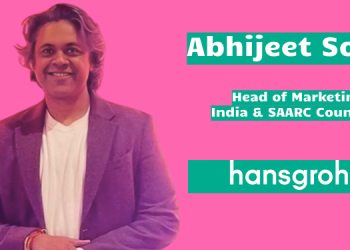As India moves towards a digital future, gaming is emerging as one of the fastest-growing sectors within the entertainment industry. This growth is fueled by a generation that is increasingly digital-native, widespread internet access, and the proliferation of smartphones. As a result, gaming is transforming the landscape of recreation in the country. Globally, the boundaries between gaming and traditional entertainment are becoming blurred, and India is no exception.
Gaming has experienced explosive growth in India over the past decade, accumulating a user base of roughly 590 million gamers in FY24. Furthermore, the Indian gaming market, valued at around $3.8 billion in 2024, is projected to grow by over 20% annually and cross $9.2 billion in valuation by 2029 (Lumikai). Mobile gaming, in particular, dominates due to the accessibility of smartphones and cheap data plans, making gaming especially popular amongst India’s young, tech-savvy population—primarily Gen Z and Millennials.
This shift has transformed gaming into a cultural force, influencing everything from social trends to leisure activities. Where gaming was once seen simply as a hobby, today, it’s a popular entertainment choice–and an increasingly sustainable career path–that spans the young urban and rural populations alike.
Rising Esports
Esports, or competitive gaming, has become a powerful bridge between gaming and traditional entertainment in India. Titles like Battlegrounds Mobile India (BGMI) and Free Fire have captivated large audiences, leading to the establishment of national tournaments that draw millions of online viewers. The recently concluded BGMI Pro Series 2024 reached a peak viewership of nearly 500,000 during the Grand Finals. Moreover, viewers logged more than 11 million hours collectively across the tournament, streamed live on YouTube (ESPORTS Charts).
Complementing these national tournaments, Ampverse DMI’s College Rivals platform has played a pivotal role in bringing grassroots esports into the spotlight. The 2024 edition of College Rivals engaged over 2,50,000 college students, recording a peak live audience of 7,000 during its finale, and has become a proving ground for emerging talent, demonstrating the vast untapped potential of esports at the collegiate level.
Live esports events are no longer limited to gaming alone. These events often feature entertainment elements such as live music performances, celebrity appearances, and in-person audiences, blending gaming with real-world entertainment experiences. The success of events like College Rivals goes beyond gameplay, featuring on-ground entertainment zones, interactive fan engagements, and brand activations, creating a festival-like atmosphere. These initiatives highlight how esports is not just a gaming phenomenon but a form of entertainment on par with sports and cinema, appealing to a wide audience in India.
Beyond the live esports events, another distinct intersection between gaming and entertainment, especially in India, is the movie gamification of popular Bollywood flicks. India is among the world leaders in mobile gaming; naturally, producers have gravitated toward the mobile gaming market to give their movies an additional push and provide fans with an alternative and interactive way to interact with their favourite films.
Correlation & Causation
India’s young population is driving the shift toward interactive and immersive entertainment. With 65% of the population under the age of 35–a whopping 800 million+ demographic–and a median age of 28.4, the demand for innovative and engaging experiences is high, encouraging more traditional entertainment providers to tap into the interactive appeal of gaming.
Furthermore, the rise of gaming influencers and streamers on platforms like YouTube and Instagram has played a crucial role in merging gaming with digital entertainment. Influencers live-stream gameplay, create commentary videos, and interact with fans, making gaming accessible to a broader audience. Indian influencers such as Payal Gaming and Regaltos have amassed millions of followers, popularising gaming as an engrossing form of entertainment.
Digital streaming and social media platforms are also facilitating this blend of gaming with entertainment, as these platforms allow game-related content to be widely shared, reaching people who may not be active gamers. This has led to the growth of gaming as a social experience, embedded within the larger entertainment ecosystem.
Investments from major tech and entertainment companies have propelled the convergence of gaming and entertainment in India. For instance, companies like Tencent have made strategic investments in gaming, aiming to combine entertainment content with interactive gaming elements. Partnerships between Indian film producers, game developers, and music labels are creating new, cross-promotional content that enhances audience engagement and generates buzz across multiple platforms.
Augmented reality (AR) and virtual reality (VR) are technologies that are helping merge gaming and entertainment, creating immersive experiences for users. While still in its nascent stages, the adoption of AR and VR in Indian gaming is growing, promising more lifelike and interactive experiences that appeal to both gamers and entertainment enthusiasts alike.
What Lies Ahead?
The growing intersection of gaming and entertainment is reshaping consumer preferences in India, with interactive experiences gaining preference over passive forms of media like traditional television. As this trend grows, job opportunities in areas like game development, digital marketing, and content creation are also expanding, contributing positively to the economy.
The convergence of gaming and entertainment in India presents numerous revenue opportunities, such as in-game advertising, microtransactions, and premium content collaborations with celebrities. These monetization avenues allow for sustainable growth in the sector, benefiting both the gaming and traditional entertainment industries.
India’s gaming and entertainment sector holds significant potential to expand its content to global markets. With rising interest in India’s rich cultural narratives, Indian games and entertainment content could gain traction abroad, positioning India as an influential content creator on the international stage. Intellectual properties like Raji: An Ancient Epic and Asura are examples of the potential that lies within Indian storytelling through the medium of video games.
The intersection between gaming and entertainment in India signals a profound shift in how entertainment is consumed and created. As cross-industry collaborations continue to grow, the Indian digital landscape is set to become even more vibrant, innovative, and interactive. Beyond the technological shift, this evolution reflects changing cultural values and consumer preferences, which increasingly prioritise immersive, interactive experiences. As gaming and entertainment intertwine, the possibilities are endless, shaping the future of entertainment in India and offering new experiences for generations to come.
(Views are personal)

















